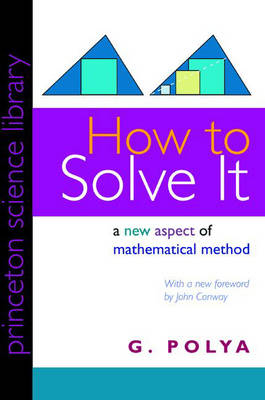
How to Solve It
Princeton University Press (Verlag)
978-0-691-11966-3 (ISBN)
- Titel ist leider vergriffen;
keine Neuauflage - Artikel merken
A perennial bestseller by eminent mathematician G. Polya, How to Solve It will show anyone in any field how to think straight. In lucid and appealing prose, Polya reveals how the mathematical method of demonstrating a proof or finding an unknown can be of help in attacking any problem that can be "reasoned" out--from building a bridge to winning a game of anagrams. Generations of readers have relished Polya's deft--indeed, brilliant--instructions on stripping away irrelevancies and going straight to the heart of the problem.
George Polya (1887–1985) was one of the most influential mathematicians of the twentieth century. His basic research contributions span complex analysis, mathematical physics, probability theory, geometry, and combinatorics. He was a teacher par excellence who maintained a strong interest in pedagogical matters throughout his long career. Even after his retirement from Stanford University in 1953, he continued to lead an active mathematical life. He taught his final course, on combinatorics, at the age of ninety. John H. Conway (1937-2020) was professor emeritus of mathematics at Princeton University. He was awarded the London Mathematical Society's Polya Prize in 1987. He was interested in many branches of mathematics and invented a successor to Polya's notation for crystallographic groups.
| Erscheint lt. Verlag | 25.9.2015 |
|---|---|
| Reihe/Serie | Princeton Science Library |
| Vorwort | John H. Conway |
| Zusatzinfo | 31 line illus. |
| Verlagsort | New Jersey |
| Sprache | englisch |
| Maße | 130 x 203 mm |
| Gewicht | 28 g |
| Themenwelt | Mathematik / Informatik ► Mathematik ► Logik / Mengenlehre |
| ISBN-10 | 0-691-11966-X / 069111966X |
| ISBN-13 | 978-0-691-11966-3 / 9780691119663 |
| Zustand | Neuware |
| Haben Sie eine Frage zum Produkt? |
aus dem Bereich


